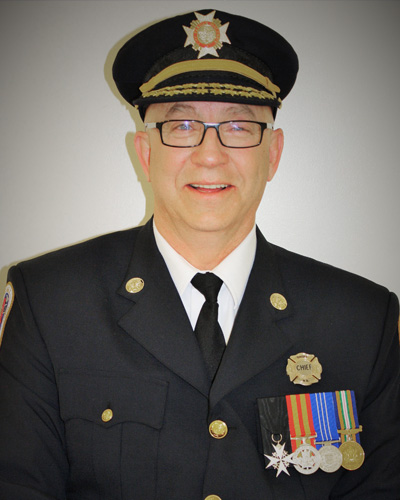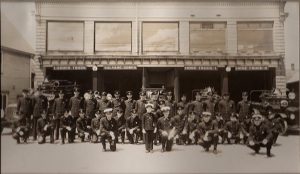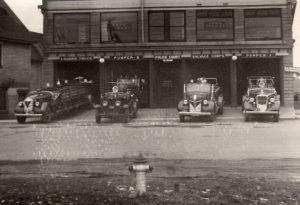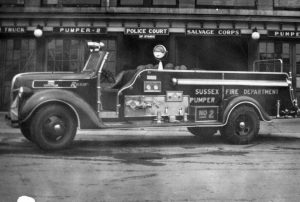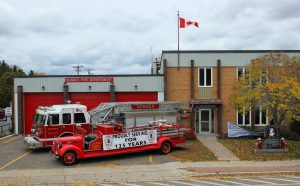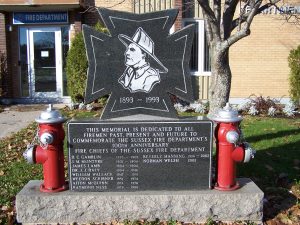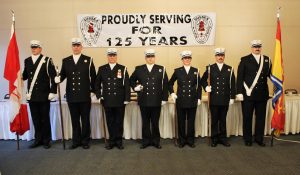It was only after several major fires in the late 1800’s that several business men of the town started giving serious consideration to the formation of an organized fire brigade.
In February 1893 posters were placed about town calling for the citizens to attend a meeting in the office of H.A. White (in the Mercantile Block) to discuss the formation of a fire company. This meeting was called for Friday, February 22nd the poster read in part “Come and talk about protection”. The posters were signed by Dr. J.J. Daly, H.A. White, C.H. Fairweather and H.H. Dryden, all prominent business men of the time.
Eighty taxpayers attended the meeting. When a vote was taken seventy voted for and ten against the formation of a fire company. Thus at this meeting the first seed was sown for organized fire protection for Sussex.
At this meeting a company was formed which was to be known as the Sussex Fire Commission. S.H. White, Ora P. King and J.M. McIntyre were added to the names mentioned in the previous paragraph to be members of this commission.
Members of the first bucket brigade were: H.E. Goold, William Wallace, Harold Charlin, William Golding, Edmund Golding, Ira McLean, Walter Cougle, A.D. Hallett, James Ashton, Ludlow Campbell, R.D. Hanson and H.P. Robinson. Their first crude equipment consisted of 200′ of rope, 12 pails, 2 ladders and 3 axes.
Shortly after it was learned that a government grant of $2000.00 was available for the formation of fire departments within the province. Another meeting was held and by a majority vote of the taxpayers present, it was decided to apply for this money. This money made possible the first major purchase of equipment.
A hand pumper was purchased for $250.00. A hook and ladder wagon for $245.00, used hose reel was bought from the Moncton department for $50.00 and 700 feet of hose was purchased for 45 cents a foot. In addition to this modern equipment, several wells were dug at strategic points about town from which water could be drawn. About this time, the first fire station was built on Park Street.
The first fire wagons were of course hauled by horses. Firemen having teams, at the sound of the alarm, would immediately unhook their load and rush to the fire station. Some of those who had teams for fire service were: Ed. Welpley, Harry McQuinn and Weeden Scribner.
The first alarm system was of primative nature. Like a lot of the equipment,was made through the ingenuity and skills of the men themselves. The alarm was locomotive tire securely anchored to the top of the fire station. Which when hit by a steel ball attached to a lever, would bring firemen and public alike running to the fire station or directly to the outbreak. This system was later abandoned and the church bell on the Baptist Church was used as an alarm for firemen. This was later done away with and modern alarm box system was installed in the town. With the chief, officers and drivers having bells in their homes, it was always the tradition of the department to keep its equipment and technology up to date. Today all firemen wear pagers on their belts and immediately receive the call, not only telling them there is a fire but exactly where it is. This present, modern day system being a far cry from the original system.
Arthur Fougler, one of the firemen who joined the department shortly after the Baptist Church bell system was put into service, related the story of how he was told by the chief; “if you hear the Baptist Church bell ring, make haste to the fire station”. One day, while raking leaves in his yard, he heard the bell and immediately dropped the rake and ran to the fire station. Only to have the fire wagon bring him back to his own house, because the roof was on fire.
Much of the early equipment was made by the men themselves. Many a volunteer hour was spent by these dedicated men in achieving their goal of making a better and more efficient piece of equipment. After the turn of the century, when the automobile was fast taking over from the horse and carriage era, the town purchased a used car. The firemen with their own ingenuity and skills, cut it in two, lengthened it out, equipped it with all the bells, sirens, ladders, hoses etc. The end result would be their pride and joy. One of the most modern and up to date pieces of equipment that could be found anywhere.
These dedicated men not only spent a lot of time working on equipment. They also found time to practice their fire fighting skills. It was common place to see them running up the street hauling a two wheeled hose cart. Reeling and stringing hose or whatever else they could do to improve their fire fighting skills, a tradition which is still carried out today – continually learning new skills and techniques. This certainly contributes to the high rating they hold among fire departments today.
Of all the new modern equipment that has been purchased over the years, there was perhaps none of which the whole town was so proud, as when “Rosie” arrived on the scene in 1936. “Rosie” (named after Chief Daly’s wife). was a brand new 1936 Ford, equipped with an 800 gallon combination pumper. This was a fast machine, getting away to a speed of 40 MPH in 20 seconds. Yes, it had everthing any modern fire department could ever desire. It could be used for a standby for the Water deparment, in the event of failure of the electric pumps. It could increase the water pressure at a fire. It had a pump that could pump water from wells, brooks and streams where there were no hydrants. It would throw four high volume streams of water on a fire at one time at a rate of two tons per minute. Yes, “Rosie” was the truck of all trucks as far as the men of the Sussex Fire Department were concerned, one of which they could be justly proud. There have been many new and better trucks since, but none which justified having a post card published in its honour. History buffs can still buy a post card with a picture of “Rosie” on it at auction sales and from card collectors etc.
In the early days of the deparment it was widely known for its modern technology and efficiency. Many towns of equal size and even larger centers sought advice from them, either by correspondence or by a visit to the Sussex Department.
There were many serious fires in the early days of the department. The most serious of which was on Sunday, June 3, 1923. At 12:50 noon an alarm was rung in from box four for a fire on the roof of Fred Whalen’s barn. Fanned by a rapidly rising wind, the fire quickly spread to other buildings in the area. One after another hotels, banks, stores, homes and out buildings fell prey to the advancing demon of fire. All the section between Summer and Peter Streets as far back as Winter Street was destroyed, as well as a large section on both sides of Main Street. In all more than thirty buildings were destroyed, with an estimated loss of over $200,000.00. By far the most disastrous fire in the history of Sussex. (A detailed account of that fire can be found in the edition of the Kings County Record on that date, or in the fifth anniversary edition of the Kings County Record dated October 14, 1937.)
The present chief is Bill Wanamaker, who has lived in the Sussex area for 34 years. He is continuing the tradition of having the best and most up to date equipment, with the best trained men to operate it that can be found anywhere.
In 1993 the Sussex Fire Department celebrated their 100th anniversary. The men who have served on it during the last century have served the citizens of this town faithfully and well, often at the risk of their own lives.
Yes, the citizens of Sussex are proud of our firemen and justifiably so. The following men are the fire chiefs of the department.
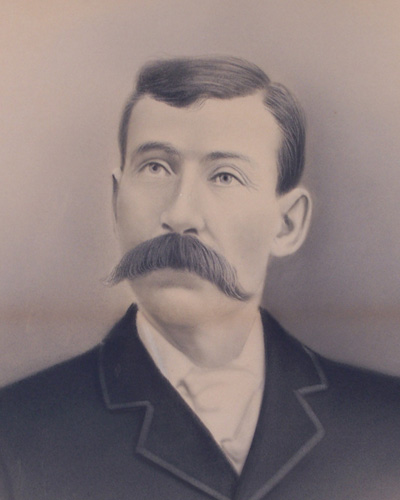
Chief D.C. Gamblin
1893-1901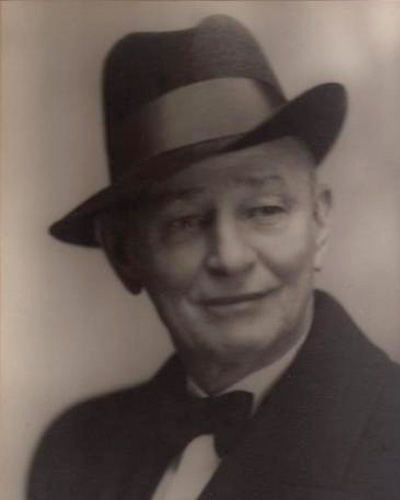
Chief Dr. J.J. Daly
1904-1946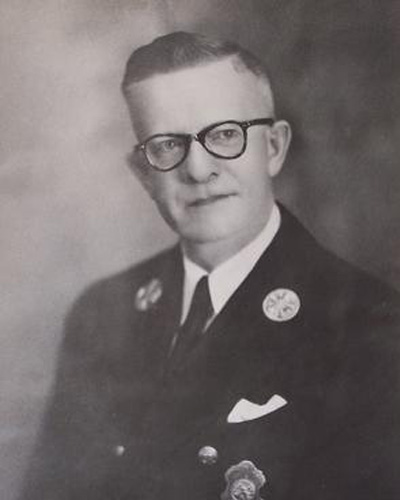
Chief William Wallace
1947-1951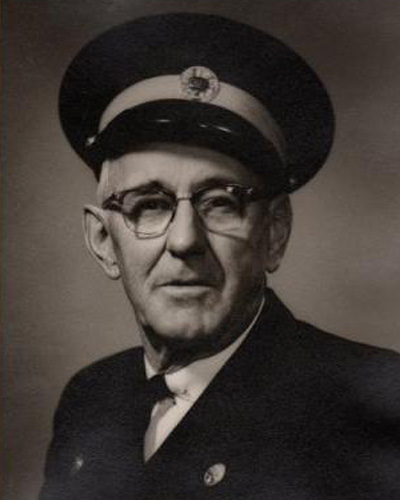
Chief Weeden Scribner
1951-1974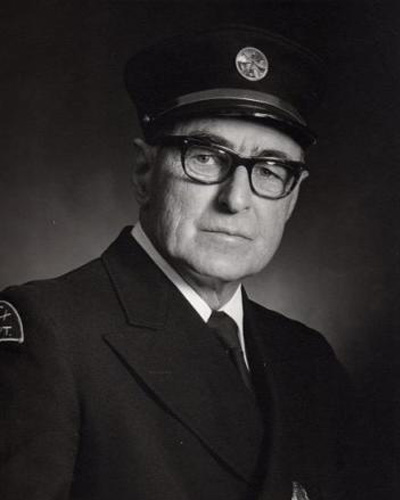
Chief Aiton McQuinn
1974-1976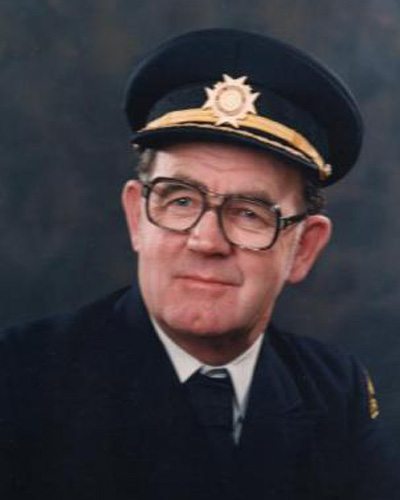
Chief Ray Ness
1976-1986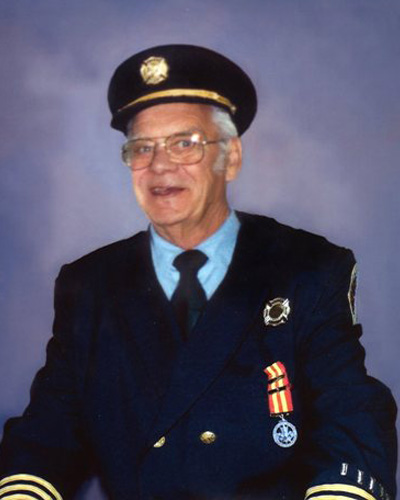
Chief Beverly Manning
1986-2002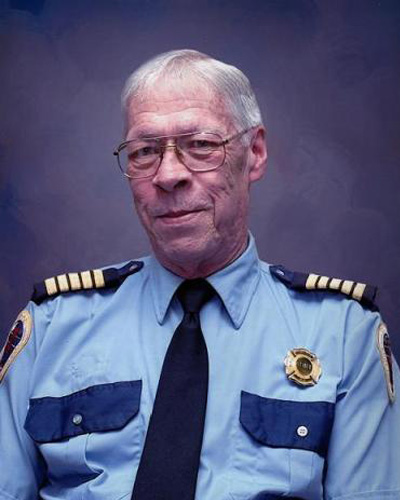
Chief Norman Welsh
2002-2007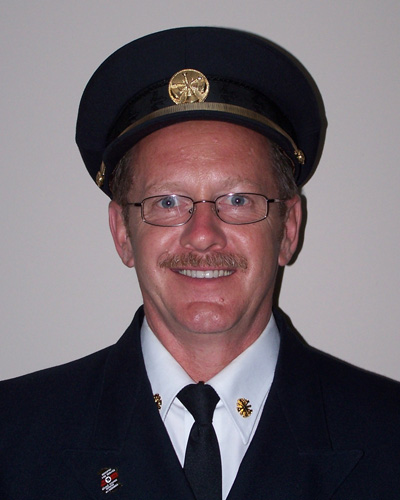
Chief Bill Wanamaker
2007-2013